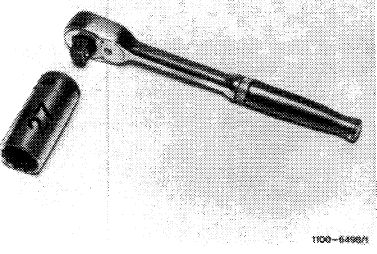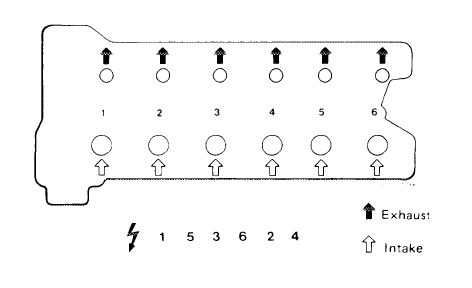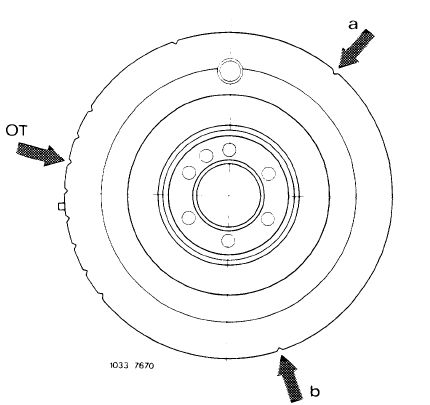Checking cylinders for leaks
|
01—015 Checking cylinders for leaks
|
|||||||||||||||||||||||||||||||||||||||
|
|
|||||||||||||||||||||||||||||||||||||||
|
Data
|
|||||||||||||||||||||||||||||||||||||||
|
|
|||||||||||||||||||||||||||||||||||||||
|
Total pressure loss
On valves and cylinder head gasket
On piston and piston rings
|
max 25%
max 10%
max 20%
|
||||||||||||||||||||||||||||||||||||||
|
|
|||||||||||||||||||||||||||||||||||||||
|
|||||||||||||||||||||||||||||||||||||||
|
|
|||||||||||||||||||||||||||||||||||||||
|
Checking
|
|||||||||||||||||||||||||||||||||||||||
|
|
|||||||||||||||||||||||||||||||||||||||
|
1 Run engine up to operating temperature.
2 Unscrew spark plugs.
3 Remove radiator cap and add coolant.
4 Remove oil filler plug.
5 Remove air filter.
6 Connect cylinder leak tester to a compressed air source. Calibrate tester.
|
|||||||||||||||||||||||||||||||||||||||
|
|
|||||||||||||||||||||||||||||||||||||||
|
7 Set piston of cylinder 1 to ignition TDC.
For this purpose, turn engine on crankshaft by means of tool combination.
8 Set throttle valve to fully open.
|
 |
||||||||||||||||||||||||||||||||||||||
|
|
|||||||||||||||||||||||||||||||||||||||
|
01.2-015/1 F3
|
|||||||||||||||||||||||||||||||||||||||
|
|
|||||||||||||||||||||||||||||||||||||||
|
9 Screw connection hose into first spark plug bore and couple to connecting hose of tester. Crankshaft should not rotate.
10 Read pressure loss on tester.
|
|||
|
|
|||
|
11 Check by listening whether pressure escapes via intake pipe, exhaust, oil filler cap, spark plug bore of adjacent cylinder or radiator cap.
12 Check all cylinders in ignition sequence.
|
 |
||
|
|
|||
|
Note: The respective pistons are in TDC position when the markings on vibration damper as shown in adjacent drawing are below TDC indicator.
|
 |
||
|
TDC position of pistons
TDC Piston 1 and 6 a Piston 3 and 4 b Piston 2 and 5
|
|||
|
Note: There is the possibility that the piston ring gaps of individual pistons are directly one above the other, so that the test result will be misrepresented.
When in doubt, continue running vehicle and check cylinders for leaks once again later on.
|
|||
|
|
|||
|
01.2-015/2 F3
|
|||
Poprzedni
Checking compression
Nowsze